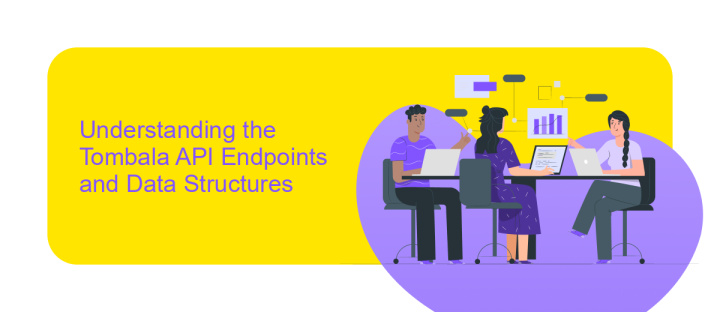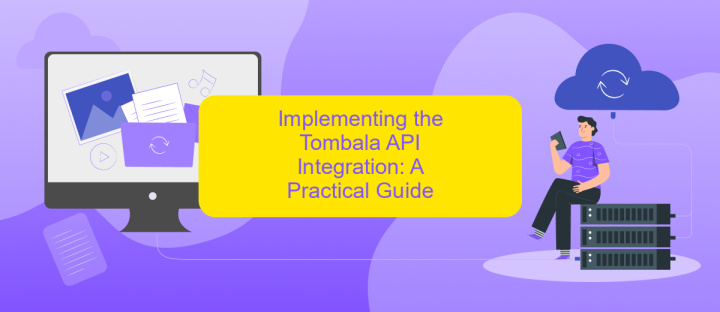Tombala API Integration
Integrating the Tombala API into your application can revolutionize the way you manage and access data. This powerful tool offers seamless connectivity, enabling developers to harness its capabilities for enhanced functionality and user experience. Whether you're aiming to streamline operations or enrich your app's features, the Tombala API provides a versatile and efficient solution, opening new avenues for innovation and growth in your digital projects.
Introduction to Tombala and its API
Tombala is a popular online gaming platform that offers a variety of engaging bingo games to players worldwide. Known for its vibrant community and user-friendly interface, Tombala provides an entertaining experience that combines traditional bingo with modern technology. The platform is designed to cater to both new and experienced players, ensuring an enjoyable gaming environment for everyone. With its growing popularity, Tombala has developed an API to facilitate seamless integration with other applications, enhancing its accessibility and functionality.
- Provides access to Tombala's game data and features
- Enables developers to create custom applications
- Supports secure and efficient data exchange
- Offers detailed documentation for easy implementation
The Tombala API is a powerful tool for developers looking to incorporate Tombala's gaming features into their own applications. By utilizing the API, developers can access a wealth of game data and functionalities, enabling them to create personalized user experiences. The API's comprehensive documentation and robust support system make it an ideal choice for developers seeking to expand their application's capabilities while maintaining a secure and efficient data exchange process.
Understanding the Tombala API Endpoints and Data Structures

When integrating with the Tombala API, understanding its endpoints and data structures is crucial for seamless interaction. The API provides a range of endpoints, each designed for specific functionalities such as user authentication, game data retrieval, and transaction processing. Each endpoint is accessed via standard HTTP methods like GET, POST, and PUT, ensuring compatibility with various programming environments. The data exchanged through these endpoints is typically in JSON format, which is both lightweight and easy to parse, making it ideal for web applications.
The Tombala API's data structures are designed to be intuitive, with clearly defined fields that represent different aspects of the gaming experience. For instance, user profiles include fields for username, email, and game history, while game data structures encompass details like game ID, status, and results. Services like ApiX-Drive can facilitate the integration process by providing tools to connect and automate interactions with the Tombala API, reducing the complexity involved in manual setup and ensuring a more efficient workflow.
Implementing the Tombala API Integration: A Practical Guide

Integrating the Tombala API into your application can enhance its functionality by providing access to a wide range of features. The process involves several key steps to ensure a seamless integration experience. First, it is crucial to familiarize yourself with the API documentation provided by Tombala, as it contains essential information on endpoints, authentication, and data formats.
- Register for an API key on the Tombala developer portal to authenticate your requests.
- Set up a development environment and install any necessary libraries or SDKs.
- Use the API documentation to configure your application to send requests to the appropriate endpoints.
- Implement error handling to manage any issues that may arise during API communication.
- Test the integration thoroughly to ensure that all features are working as expected.
Once these steps are completed, your application will be able to interact with the Tombala API, leveraging its capabilities to enhance user experience. Regularly check for updates or changes in the API documentation to maintain compatibility and optimize performance. Proper implementation can significantly boost your application's functionality and reliability.
Best Practices and Common Pitfalls in Tombala API Integration

When integrating the Tombala API, it's essential to prioritize a thorough understanding of the API documentation. This foundational step ensures you leverage all available features effectively and minimizes integration errors. Begin by familiarizing yourself with the authentication process, endpoints, and data formats.
Another critical aspect is robust error handling. Implementing comprehensive error logging and monitoring mechanisms will help you quickly identify and resolve issues, ensuring a seamless user experience. Additionally, consider rate limiting to prevent overloading the system and to maintain optimal performance.
- Ensure proper authentication and authorization mechanisms are in place.
- Validate and sanitize all input data to prevent security vulnerabilities.
- Regularly update your integration to align with API changes and improvements.
- Test thoroughly in a sandbox environment before going live.
Common pitfalls include neglecting to handle edge cases and failing to update the integration in response to API version changes. By adhering to best practices and remaining vigilant to potential issues, you can achieve a successful Tombala API integration that enhances your application's functionality and reliability.


Testing and Maintaining your Tombala API Integration
Testing your Tombala API integration is crucial to ensure seamless functionality and user satisfaction. Begin by setting up a test environment that mirrors your production setup. This allows you to safely execute API calls and monitor responses without affecting live data. Utilize automated testing tools to simulate various scenarios, ensuring that all endpoints respond correctly and efficiently. Additionally, perform stress tests to evaluate how your integration handles high traffic volumes. Pay attention to error handling and logging mechanisms to quickly identify and resolve issues. Regularly update your tests to reflect any changes in the API or your application.
Maintaining your Tombala API integration involves continuous monitoring and periodic reviews. Use monitoring tools to track API performance and detect anomalies in real-time. Schedule routine maintenance checks to update any outdated components and optimize performance. Consider leveraging services like ApiX-Drive to streamline integration updates and manage data flow efficiently. ApiX-Drive offers automation capabilities that can help maintain your API connections with minimal manual intervention. Stay informed about API updates and best practices to ensure your integration remains reliable and secure over time.
FAQ
What is Tombala API Integration, and why is it useful?
How can I start integrating Tombala API with my existing systems?
What are the common challenges faced during Tombala API Integration?
How can I ensure data security during Tombala API Integration?
Can I integrate Tombala API with multiple applications simultaneously?
Do you want to achieve your goals in business, career and life faster and better? Do it with ApiX-Drive – a tool that will remove a significant part of the routine from workflows and free up additional time to achieve your goals. Test the capabilities of Apix-Drive for free – see for yourself the effectiveness of the tool.

